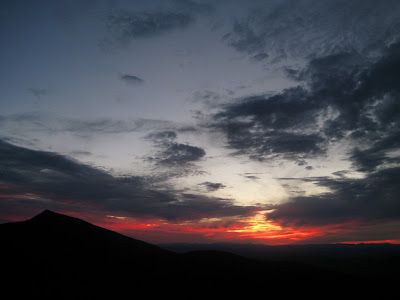
My experience in Latin American cities is pretty limited, but on a superficial level, Mexico City, or the D.F. as the natives know it, fits the superficial stereotype. It is vibrant, crowded, seemingly unorganized but actually quite hierarchical, and highly polluted. At 7,000 feet, it lies in a mountain bowl, surrounded by some of the biggest peaks in North America.
I felt the altitude on my way up to the third floor of the Hotel Montecarlo, having carried with me a surplus of baggage for my return to the New England winter. On the streets, my breathing was fine, though Robert (a wonderful old college friend who visited me in Austin before I helped him kick off his month in Mexico) and I noticed a number of people wearing surgical masks over their mouths. Neither SARS nor bird flu was threatening Mexico City—these folks were simply worried about the particulates in the air.

On our first full day, we climbed the pyramids of Teotihuacán, enormous stone edifices built in the first century by the Olmecs. It was December 12, the anniversary of the Virgin of Guadalupe’s appearance back in the 16th century, and the sound of firecrackers reverberated through the air. Though a sunny, relatively dry day, it was difficult to even see to the horizon. Indeed, I never really got a sense of the city’s massive scale because every vantage point, even from the plane, was compromised by smog.
When I checked my email and the headlines over the course of the week, there was plenty of news about the failure to agree on reducing CO2 emissions at the Bali conference. While C02 isn’t particularly responsible for impacting visibility, its source and the slow but sustained nature of its effects are quite similar to the compounds impacting visibility and health—nitrates, carbon monoxide, and ozone.
While the evidence of global warming and its causes are by now obvious, the lack of an immediate crisis such as panda bears dying or local, fatal cases of asthma makes policy solutions far more elusive. Congress just passed an energy bill raising car mileage standards significantly, but another mandate to produce 15% of our energy from renewable sources by 2020 was stripped out because Republicans objected to raising taxes on energy companies to pay for the new investments. When, during a time of extraordinary profits for the oil and coal industries, Congress can’t muster the votes for what, in the grand scheme, is quite a small increase in renewable fuels, the situation appears hopeless.
 Few people would be surprised by the amount of air pollution in Mexico City. But I’ve also seen disgusting levels in supposedly wild and pristine places this year. Up at Galehead, the smog floating in from the Ohio River Valley was so bad that we didn’t want to go outside sometimes for fear of the clear brown streaks in the sky. At Big Bend, as I’ve written about on this blog, despite being the most remote National Park in the lower 48, I could barely see the Rio Grande, only 15 miles away from the highest of the Chisos Mountains. The maquiladoras near Ciudad Juarez emit a stream of emissions that sails directly east into the park.
Few people would be surprised by the amount of air pollution in Mexico City. But I’ve also seen disgusting levels in supposedly wild and pristine places this year. Up at Galehead, the smog floating in from the Ohio River Valley was so bad that we didn’t want to go outside sometimes for fear of the clear brown streaks in the sky. At Big Bend, as I’ve written about on this blog, despite being the most remote National Park in the lower 48, I could barely see the Rio Grande, only 15 miles away from the highest of the Chisos Mountains. The maquiladoras near Ciudad Juarez emit a stream of emissions that sails directly east into the park. On my last full day in Mexico City, Robert and I took a bus up to the Paseo de Cortes, a mountain pass between two of the
 huge volcanoes east of the city. It is from this point, in 1519, that Cortes first beheld the city of Tenochtitlan, the marvelous Aztec capital. It was the Venice of the Americas, a series of islands grouped around a main temple complex, connected by canals and several long causeways to the mainland. Of course, less than fifty years after the Spanish conquest, the entire lake had been filled in to make room for the new Spanish city. Today, many of the older buildings tilt dangerously due to their shaky foundations on fill.
huge volcanoes east of the city. It is from this point, in 1519, that Cortes first beheld the city of Tenochtitlan, the marvelous Aztec capital. It was the Venice of the Americas, a series of islands grouped around a main temple complex, connected by canals and several long causeways to the mainland. Of course, less than fifty years after the Spanish conquest, the entire lake had been filled in to make room for the new Spanish city. Today, many of the older buildings tilt dangerously due to their shaky foundations on fill. Needless to say, the city was invisible from our lofty vantage point, despite having gotten ourselves all the way up to 12,000 feet. On our way down, the sunset was magnificent—but such is the beauty of a hazy landscape at dusk.

PIctures: Robert and me on the Pyramid of the Sun, with the Pyramid of the Moon in the background, the view from the Pyramid of the Moon, a warning about volcanic eruptions, a tilting church in the Palacio Nacional, and sunset from the mountains to the east of the city.















































